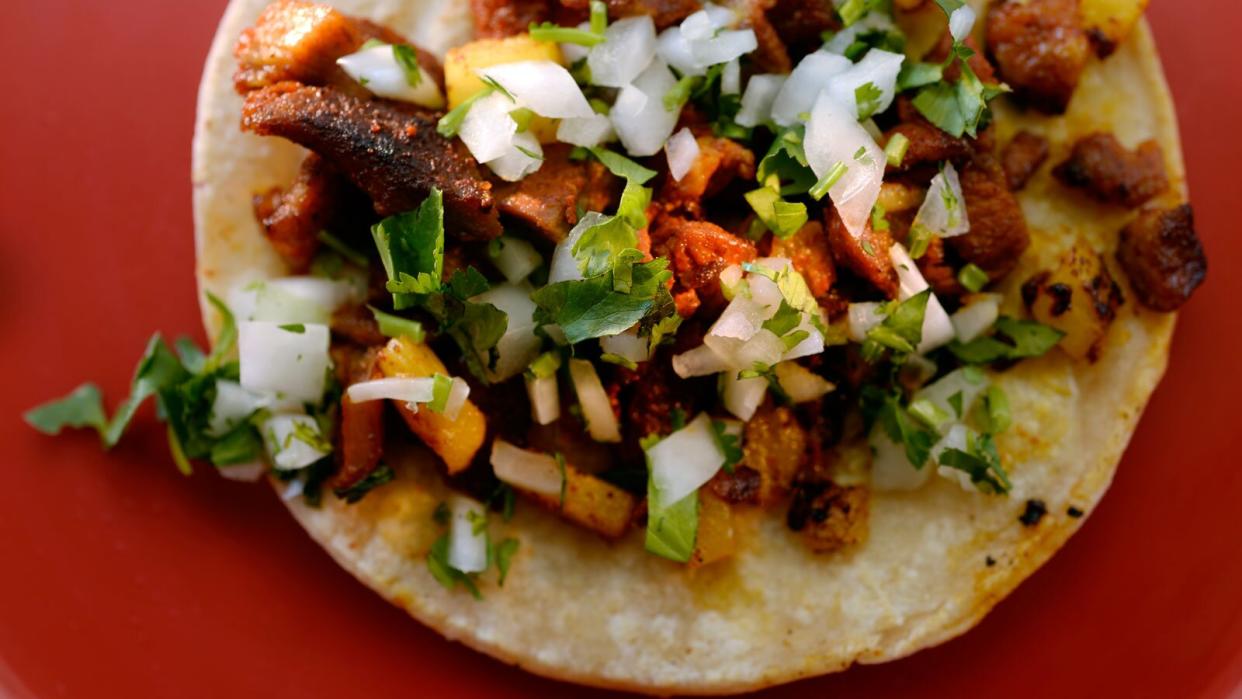Corn vs. Flour: When to Use Each Kind of Tortilla

© Cyrus McCrimmon/Getty Images
When it comes to tortillas, there's one crucial question to answer: flour or corn? Before we can answer that question, let's look at how we got to this point.
Corn tortillas came first and, according to Mexican cuisine historian Agust Gayte, have been a staple of the Mesoamerican diet for a few thousand years. When Hernando Cortez arrived in Mexico in 1519, he noticed the Mexican Aztecs' love of flat corn breads that they called "tlaxcalli" and which he soon dubbed "tortillas," or little cakes.
Conversely, the origin of the flour tortilla is a little more complicated. According to food historian Melissa Guerra, the Spanish colonizers refused to eat corn as they deemed it unfit for human consumption upon their arrival in Mexico. Once flour tortillas became available, the Spanish catholics tended to prefer the new flour tortillas due to wheat's association with the body of Christ. Then, as Jewish immigrants fled the Iberian Peninsula during the Spanish Inquisition, many settled in Northern Mexico, including what is now Texas. Since corn was not kosher, Guerra believes that the Jews then started making flour tortillas, which continue today to be the tortillas of choice in the region.
Today, the border is the only part of Mexico where the flour tortilla still dominates, while different types of corn tortillas are the de facto choice as you move southward. Americans tend to prefer flour, but corn is gaining ground.
Sometimes, you'll have to make a choice between flour and corn. But there are certain foods that should only ever be constructed with one or the other. Here are a few examples:
Breakfast Tacos: Flour
Here's a good rule to live by: heartier tacos require flour tortillas. And breakfast tacos, more so than others, definitely require the strength of flour tortillas. While breakfast tacos can take on a wide range of ingredients, from potato, bean and cheese to chorizo and egg to migas, each of them needs the support of a flour tortilla as it's less likely to collapse under pressure. The moisture from the eggs, coupled with the barrage of salsa that breakfast tacos require, can turn a corn tortilla soggy.
Al Pastor Tacos: Corn
Al pastor might just be the definitive taco of Mexico City, where trompos of spinning meat draw customers from blocks away. As such, this wonderful blend of spit-roasted pork, onion, cilantro, lime and pineapple should always be served on a corn tortilla as is tradition in Mexico's capital. Also, fun fact, al pastor came about after Lebanese immigrants arrived in Mexico during the 19th and 20th centuries and started selling shawarma on the streets.
Baja Fish Tacos: Corn
There are four requirements for a perfect Baja-style fish taco: fresh, and preferably grilled, white fish (tilapia and mahi-mahi are both excellent choices), crunchy slaw, lime and a corn tortilla. While the Baja Peninsula is in the border region where flour tortillas are still commonly eaten, fish tacos are an instance where the flavor of the corn itself comes through stronger than it does with other tacos. Baja fish tacos' other ingredients, while all delicious, are lighter in flavor and leave more room for the tortilla itself, versus other tacos that are overpowered by seasoning (i.e. chorizo) or lots of salsa.
Burritos: Flour
Americans' love of burritos has helped propel flour tortillas into the number one spot in the States. Once the Mission-style burrito took off in San Francisco and slowly made its way across the country, large flour tortillas became the de facto choice for many Americans and for good reason: corn tortillas don't stand a chance against the monstrous amount of food found in a standard burrito. Rice, beans, cheese, salsa, lettuce, guacamole and some kind of animal protein? This is what the flour tortilla was built for.

